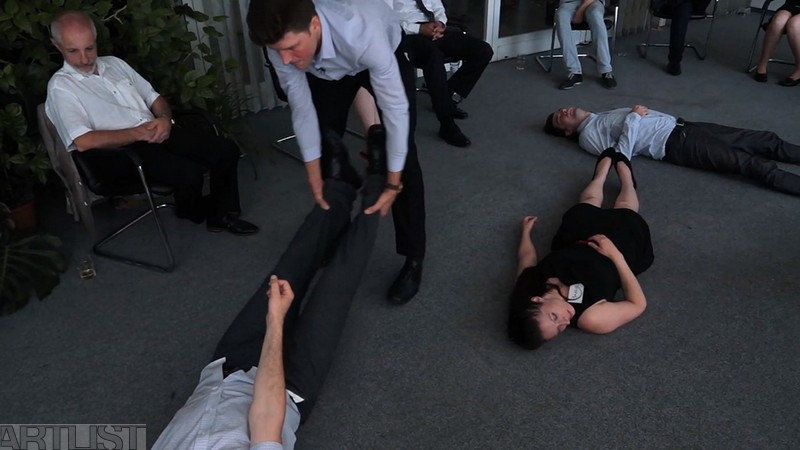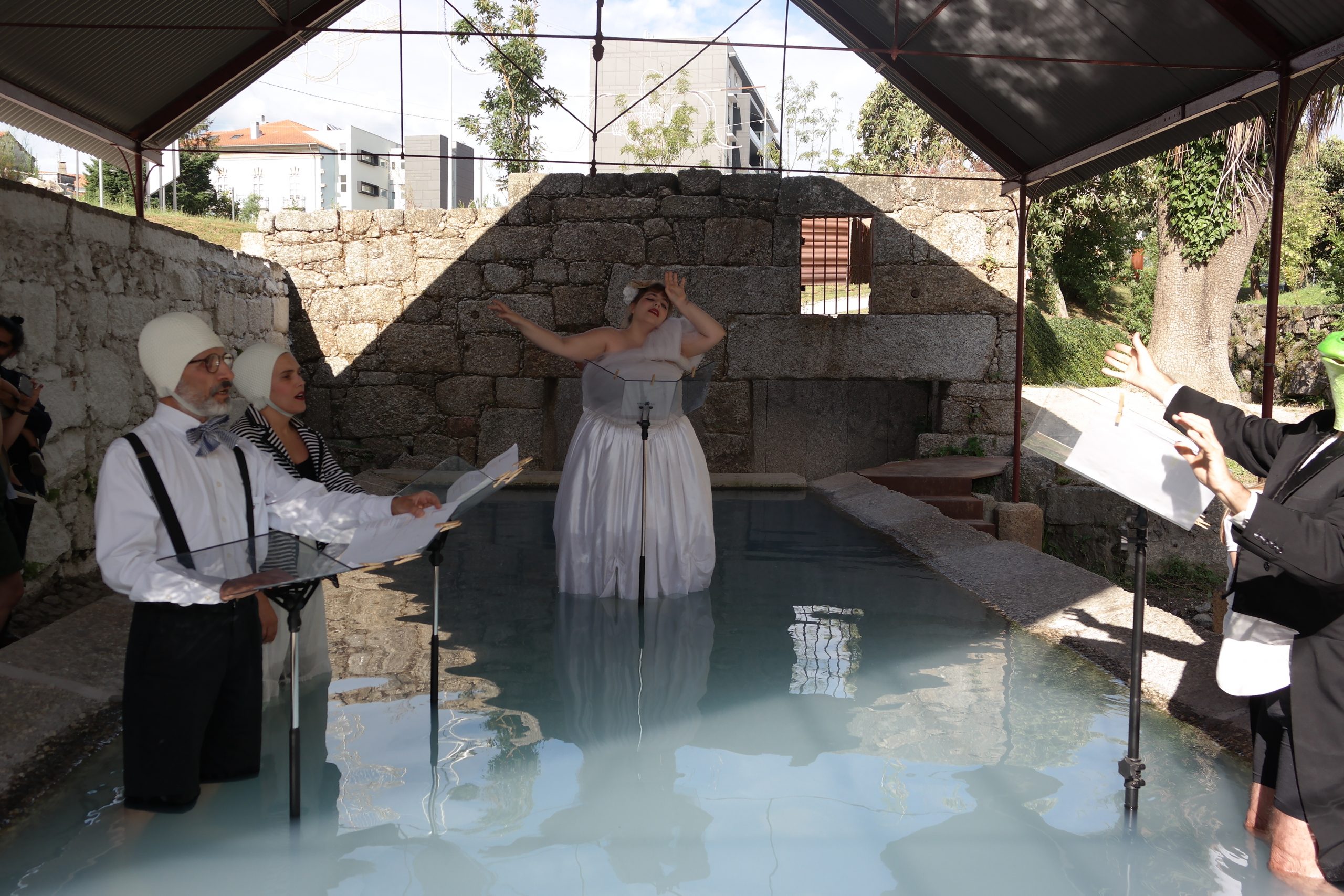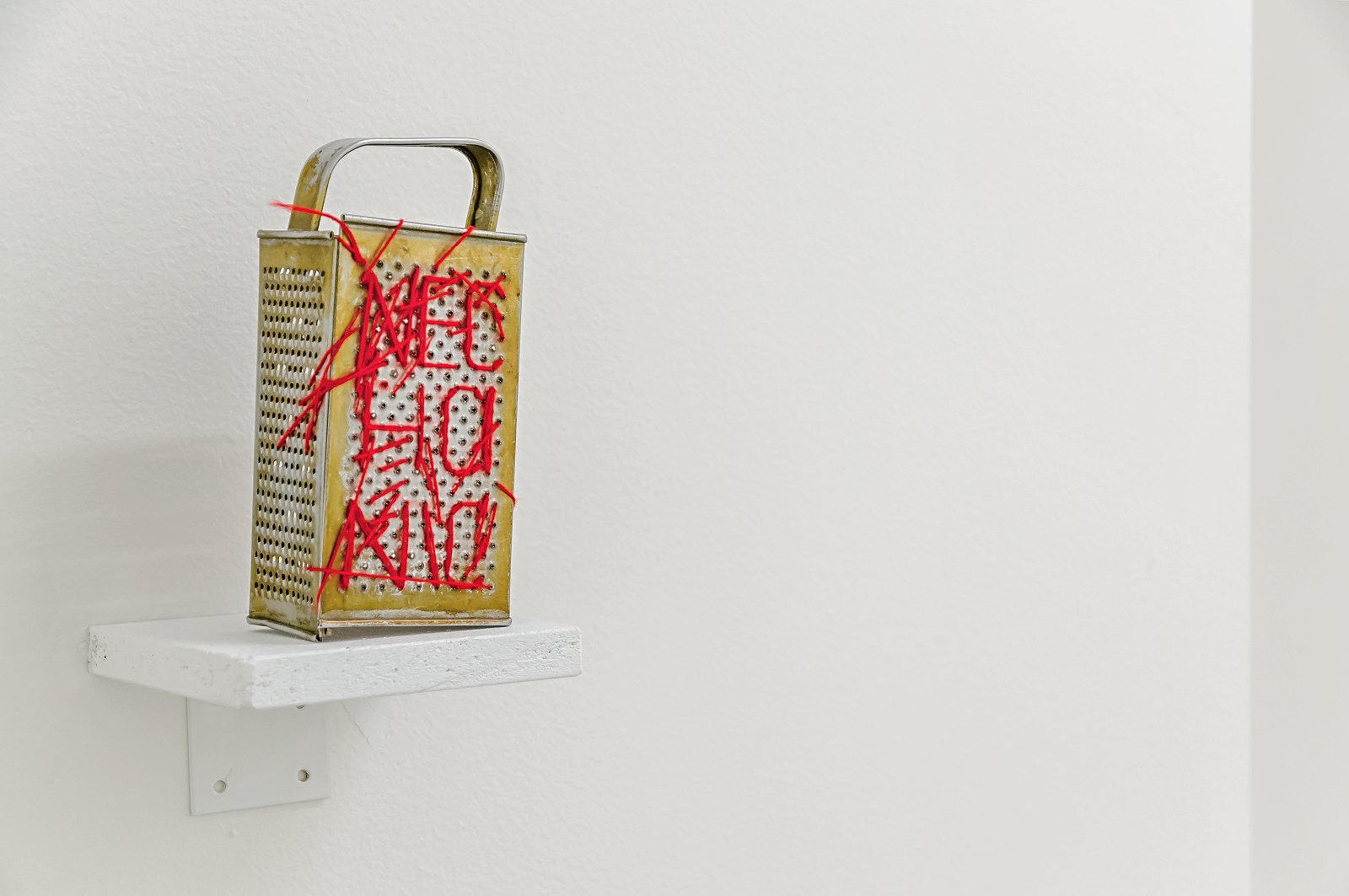When we look at contemporary live art, its complexity, symbolism and strong expressivity, which works dramatically with time, staged action, and the ambiguous identity of the carrier of the narrative, the processual post-conceptual wave of the new millennium seems formally subtle, careful and schematic, the role and position of art in society – in the practice of the up-and-coming generation – is more often linked to strong images that enthral their audiences and formally rich meta- phorical representations.
Relational aesthetics and the politically motivated need for social activities, which – at a time of frustrating transformation – appealed to the deficit of cooperation on the institutional field; resulted in insufficient initiatives. This led artists and collectives to an effort to break the stereotypical borders of art through interactions with the world outside art, creating a debate and thus consecrating the social and political role of art.
Around the year 2000, the collective activities of artists and artist groups such as Rafani, Isabela Grosseová and Jasper Alvaer, Kateřina Šedá, Adam Vačkář, the Ládví group, the duo of Jiří Franta and David Böhm, or later P.O.L.E., have taken on the characteristics and strategies of activism. To this end, they infiltrate various environments using questionnaires, probes and other points of contact with unknown political groups and communities. This tactical arsenal played its part in a certain formal loosening. Strategies taking art out of the academic cage brought a feeling of liberation even though the programmatic empathy towards marginalised groups and overlooked contexts was sometimes unfinished and superficial.
Further developments on the international scene during the crises of neoliberalism and international cooperation programmes (struck by economic collapse within the EU), sharing global problems on social media – all this confirmed our scepticism and a knowledge of the system’s fragility. Attention moved to a different kind of responsibility. The proclaimed openness, greater awareness, flexibility and operativeness demanded a deeper evaluation – a look into the shadowy problems of these global times and their doctrines. Naive programmes were replaced by doubt and a loss of orientation, a more existential approach allowing for a deeper examination of the emotions surrounding various conflict situations. It does not seem that taking a political position in the globalised world is easy, nor is it easy to define oneself as a political subject or a stereotypical identity.
A grand irony in the development of the comeback of situationism, participative art and cooperation in the preceding two decades – which emphasised inclusion, left-wing values and the emancipation of both individuals and groups – is the declared and justifiable measure of scepsis and doubt on how meaningful these altruistically intended activities can be. The artistic motivations can be summarised with terms like “the ethical turn” and “the social turn” and the related manners of representation referring to Brecht’s legacy of activating the spectator. Around the year 2005, the international scene seemed ready for art that no longer celebrated sociability and collectivity, but could instead admit to the narcissism of beneficially staged activity in art, placing various social asymmetries and conflicts soberly into context, including the use of antagonism. On the Czech scene, we noticed subversive and ironic interventions such as the absurd, hidden and unasked-for help of Eva Jiřička (Parked Other People’s Things) or Vasil Artamonov and Alexey Klyukov (Jak jsme pomáhali – How We Helped), or Daniela Baráčková, Petra Herotová and Tomáš Uhnák preparing food for the “privileged” part of the attend- ees (Vaříme pro muže – Cooking for Men). Their aim was to confirm the ambivalence; to admit the inevitable duplicity in the relationship of the artist and social field under scrutiny; to confirm the unhealthy dynamics of stereotypes. In an effort to resolve the contradiction between utopia or an idealised version of engagement, projects were created which directlydemonstrated the obstacles and contradictions that better illustrated social reality, such as ethnic, social or gender inequality. In a reality constructed by power interests, a manipulable identity became the carrier of roles, and the concept of fluid bodies within the transforming context of political and gender ambiguity complicated political action, as we can observe in the work of Isabela Grosseová and Jesper Alvaer or the staged videos of Barbora Kleinhamplová or Kočovná společnost (Sláva Sobotovičová and David Fesl).
A more complex approach within the “theatrical turn” is represented by the Brechtian approach of Aleš Čermák or the youngest generation of artists, such as Vojtěch Novák and Andrew Hauner. We can also see certain ritual strategies such as a fusion of theatricality and open processes. Ritualisation relates not only to the persisting strategies of the art made by older generations of performers, including audience members as active participants, but we can also observe it occurring at an unprecedented rate with the youngest artists. A theatricality which does not risk the participation of an unprepared audience is still a highlight, professional and well-instructed performers becoming a means for suggestive, subliminally composed images – for examples we can look to Eva Koťátková, Barbora Kleinhamplová or, in the younger generation, Lukáš Hoffmann a.k.a. Saliva, New Aliens Agency and Marie Tučková. If gesture, the manifesto and interventions were the characteristics of the art of the first decade of the 21st century, then the art of the second decade confronts us with complex processes and extremesituations, often through ostentatious spectacularity or extravagant theatricality, expressing amassed and unprocessed emotions, presenting unsorted material and thus appealing to a broader and deeper spectrum of attention and sensitivity in today’s tense times.
Mariana Serranová is a curator and contemporary art theorist.



